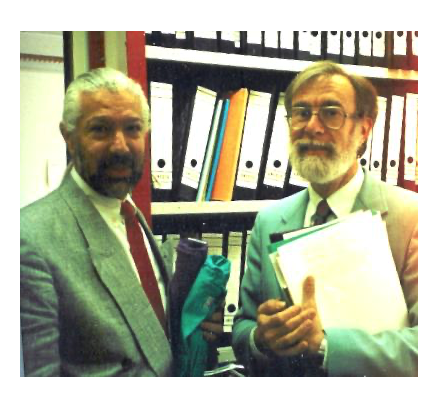Stories
National culture of peace programmes
Missions for the culture of peace
The failure of the culture of peace programme
Brothers for Peace
* * *
The original purpose of my voyage to Paris on my University sabbatical in 1992 was to develop materials for the dissemination of the Seville Statement on Violence, recently adopted as official UNESCO policy by UNESCO and its Director-General, Federico Mayor, who had been one of the Statement signatories before he was elected to the top post at UNESCO.
|
With the fall of the Soviet Union and the end of its veto power in the Security Council, there were great changes going on at the UN. Not only had the Gulf War been fought in the name of the UN, but now there were military peacekeeping operations being developed for deployment throughout the world. There was a real danger that the UN could become a global military tyrant. In March Lindsay came over to France to see me and I arranged for a vacation in the South of France at St John de Luz, at a friend of Olga, the woman who had "checked me out" for Nicole in Paris. We were there for three or four days and it rained continuously. With little else to do, I took pen and paper and sketched out a 6-page proposal: A role for UNESCO in UN Peacekeeping: Culture of Peace.
Mary Belgrave, his very capable secretary, gave me an appointment for May 13. It was the day of my birthday. I went early and joined him at his breakfast which was largely milk at that point because he had a problem with ulcers. He read the proposal, made a few notes and said, "We'll do it." I did not show him a more political preface which was written more for my own thinking and which would become more central to my writing 15 years later. It was not politically wise to have such a proposal coming from an American, given the reactionary role being played in the world by the United States and the fact that the US, along with the UK, had withdrawn from UNESCO a few years earlier hoping to destroy the organization. Hence, Mr Mayor told me that he would have it proposed by his friend Ahmed Sayad, ambassador from Yemen, who was head of the relevant commission of the Executive Board. And that is how it became known as the Sayad proposal. During that first summer, I shared the "baby" with my two friends named Nadia, Nadia Auriat who worked near me in the Social Science sector, and Nadia Khromchenko (See The Russian girls). Nadia K had met Mayor at Issyl Kyl when she was 14 and was pressed into service as a Russian/English translator when the other translator became ill. She was very pretty, and Mayor had a reputation as a womanizer... About the time that I arrived at UNESCO, she did, too, coming to his office and announcing to Mary Belgrave that she had come to see her "Friend Federico" who had promised her a job. Mary was scandalized, especially when she went into Mayor's office once and found Nadia dancing on his desk! Nadia was like that: very pretty, very bright, and very audacious! We found common ground in our love for Russian poetry, and she became my source of gossip from the inner circle around Mayor. At one point that summer, Mr Mayor set up a meeting for me to discuss the proposal with his Chief of Cabinet, Daniel Janicot. My responses to Janicot's questions were eventually appended to the "Sayyad proposal" that was presented to the Executive Board. Reading Janicot's question, Mayor exclaimed to me that "he doesn't understand at all!" When the "Sayyad proposal" was presented to the Executive Board in October, I took a break from my classes at Wesleyan and flew in to be present at the Board's discussion, but the discussion was postponed and I had to fly back to teach. The first flight was paid by UNESCO. But then I paid myself to fly back and to be present when it was debated. The debate was truly remarkable, and ended with standing unanimous applause, something that I have never seen at any other time at the Executive Board! |
 |
Stages
1986-1992
Fall of Soviet Empire
1992-1997
UNESCO Culture of Peace Programme

